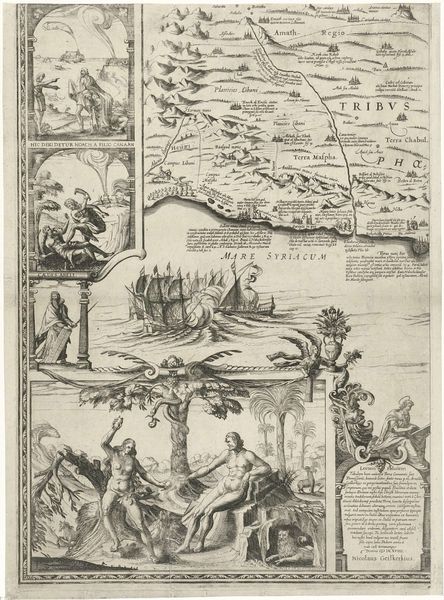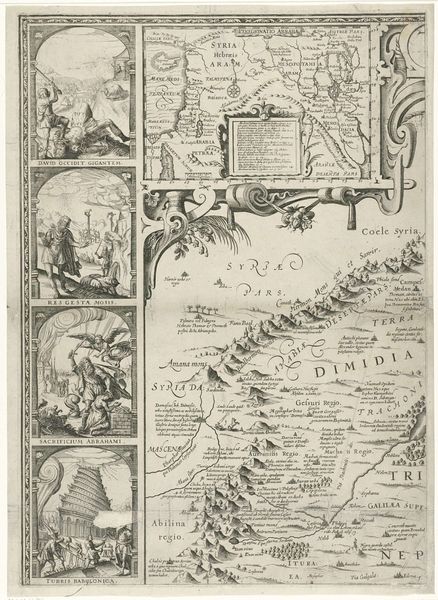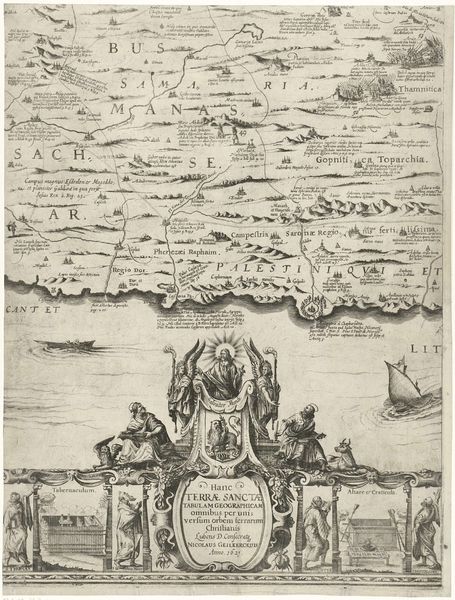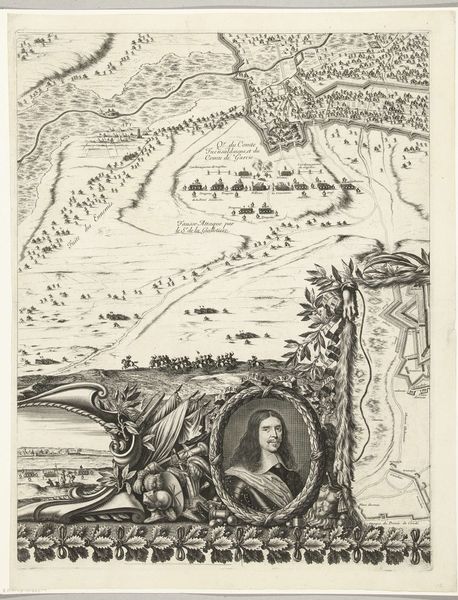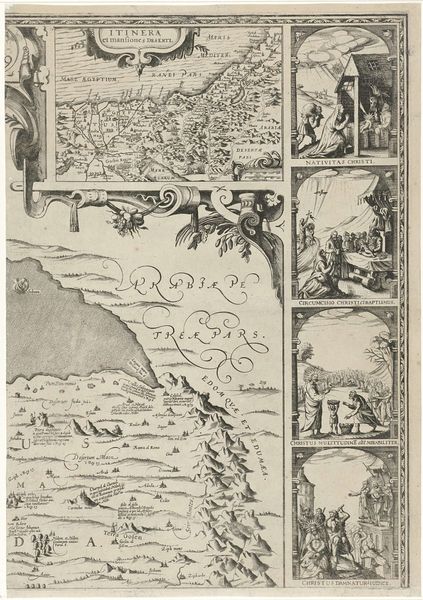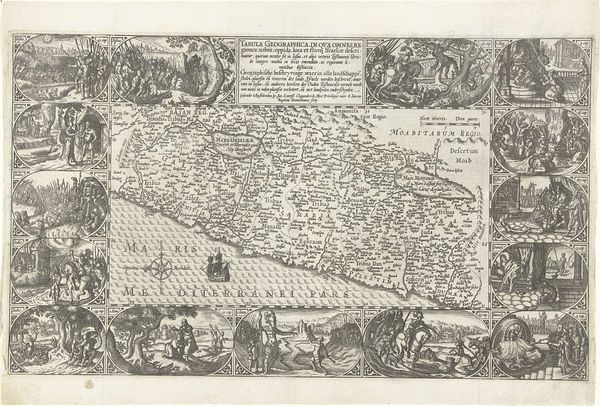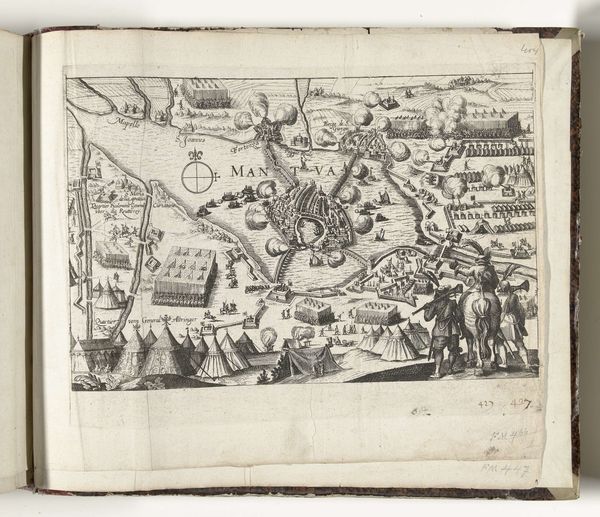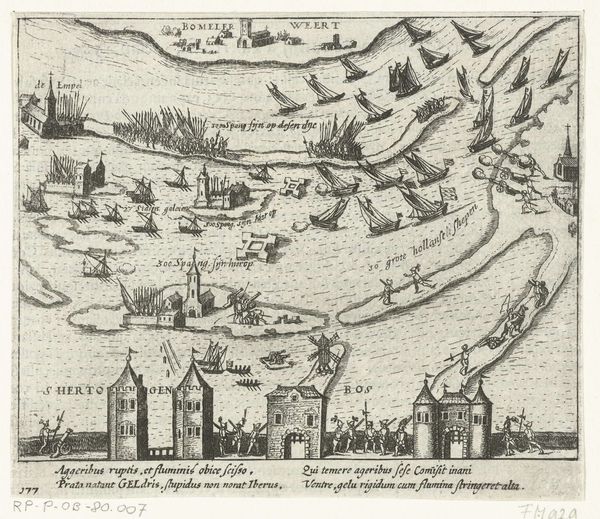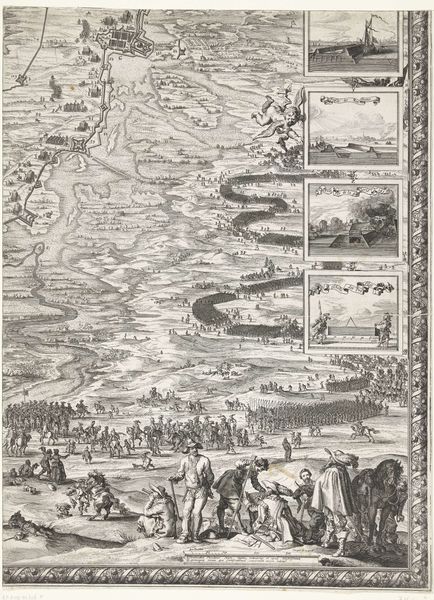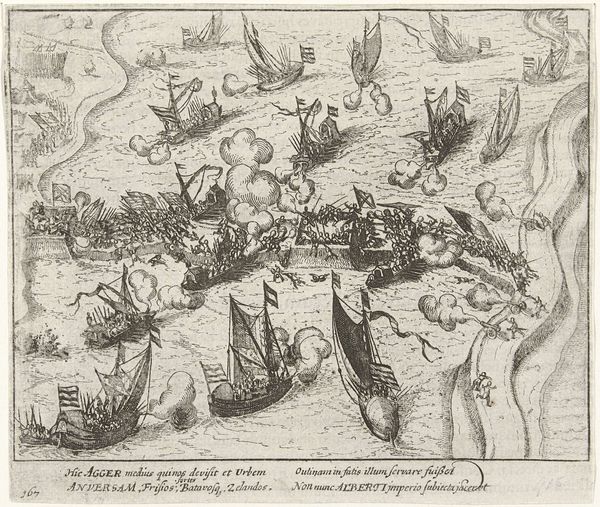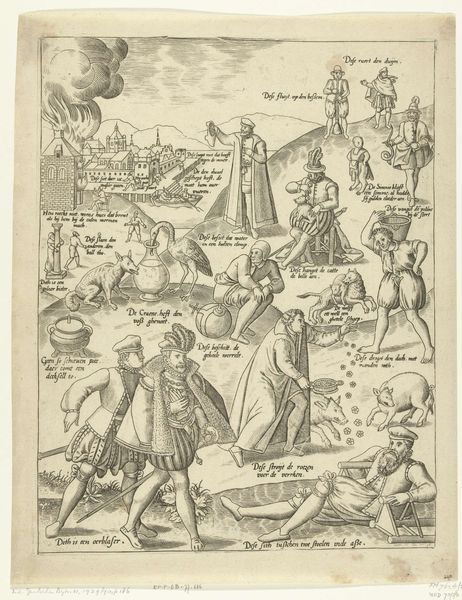
print, engraving
# print
#
pen illustration
#
pen sketch
#
landscape
#
geometric
#
pen-ink sketch
#
pen work
#
sketchbook drawing
#
history-painting
#
academic-art
#
early-renaissance
#
engraving
Dimensions: width 414 mm, height 548 mm
Copyright: Rijks Museum: Open Domain
Curator: Let's discuss Nicolaes van Geelkercken's "Kaart van Palestina," dating back to 1621. It's currently held in the Rijksmuseum, a fascinating blend of cartography and religious imagery. Editor: It's arresting, isn’t it? The immediate impression is one of intricate detail, meticulously rendered. The interplay between the landscape and the allegorical scenes creates a powerful, almost theatrical effect. Curator: Indeed. It is not just a map, but a statement. This work embodies the era’s political and religious convictions, positioning Palestine, or the Holy Land, as a focal point within a deeply religious context. Notice the small scenes accompanying the land depicted—Christ being put in the tomb and other allegorical Christian moments—underscore the intended purpose: visualizing sacred space, and therefore claiming that space as Christendom. Editor: From a formal perspective, the use of line is incredibly effective. The precise hatching and cross-hatching build volume and texture, contrasting the geometric precision of the mapped region. The placement of religious figures within stylized clouds lends the composition an almost heavenly aura. The cartography blends quite fluidly with theological concepts. Curator: And the map served practical functions for pilgrims and theologians alike. It was not solely an aesthetic object. We see these types of prints circulating throughout Europe. Its distribution and consumption were shaped by both religious doctrine and increasing knowledge, reflecting power structures that valued territorial control and cultural domination. Editor: But how striking, the sheer visual complexity! The symbolic weight placed on the figure of Christ really stands out. You can almost see the tension between the earthly domain depicted by the landscape and the spiritual one suggested by his figures. The composition has a narrative force driving the eye from area to area on the map. Curator: In a way, "Kaart van Palestina" provides a glimpse into the intersections of faith, politics, and geographical knowledge during the early 17th century. Editor: Yes. Through carefully studying its structure and deployment of sacred imagery, we get a good idea of its effect as it attempts to elevate a geographical view of a space with religious belief.
Comments
No comments
Be the first to comment and join the conversation on the ultimate creative platform.
